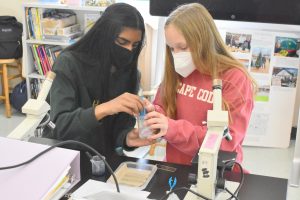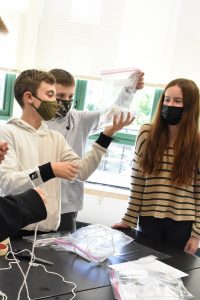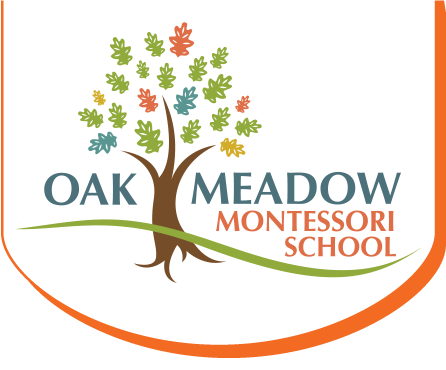This week, students in Middle School have been studying the complex relationship between cells, tissues, and organs of the human body. This is part of the biology and life sciences curriculum in Middle School. When I stopped by the class this week, students were grouped at tables, each student using a microscope to explore the difference between onion cells and cells from their own cheek.
 “This is something students can really relate to right away,” the teacher Maria Cunha told me, “because they are looking at highly magnified views of their own cheek cells.” Students had to compare the onion cells and their cheek cells in various magnifications, such as 40x and 400x magnification.
“This is something students can really relate to right away,” the teacher Maria Cunha told me, “because they are looking at highly magnified views of their own cheek cells.” Students had to compare the onion cells and their cheek cells in various magnifications, such as 40x and 400x magnification.
Copying the image seen through the microscope, students carefully drew side-by-side pictures, showing exactly what the onion cells looked like compared to the cheek cells, under each of the different magnifications. I asked the students to tell me what they were seeing. “The onion cells look very structured,” one student told me, “while the cheek cells are more globular.”
Cells combine together to make a tissue and tissues join together to make an organ. So to make this concept easier to understand, the students also used a variety of art and crafts materials to make their own greatly enlarged version of cells and tissues.
 “The goal of this unit,” the teacher explained, “ is to help students understand the different parts, structures, and functions of cells, and compare them visually. Students are also learning how to use the microscopes, and develop the skills of writing good lab reports, something that is required every week at the end of the science lab class.
“The goal of this unit,” the teacher explained, “ is to help students understand the different parts, structures, and functions of cells, and compare them visually. Students are also learning how to use the microscopes, and develop the skills of writing good lab reports, something that is required every week at the end of the science lab class.
Although biology and the life sciences are included in the curriculum in many middle schools, what stands out about what we do at Oak Meadow is our recognition that students learn best through hands-on experiences. Teachers go to great lengths to take topics that are complex and abstract and make them accessible and understood by creating learning experiences for students that are as concrete, tangible, relevant, and experiential as possible. This begins with our very youngest students and continues through Middle School.





